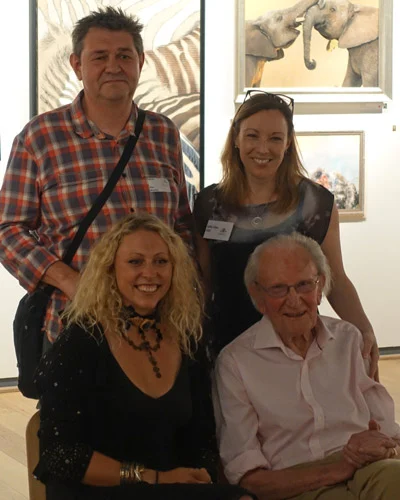Gary Lawrence has won the £8,000 First Prize in
the Jerwood Drawing Prize 2017. It's the second time he's won First Prize.
He also won in 2011
Last time he won with a very complex 6ft by 4ft drawing called
Homage to Anonymous - as a tribute to unknown artists. He produced a simple view of Pothea reflecting on his holiday to the principal town on the Greek island of Kalymnos
using a packet of ten Tesco Value budget pens which he used to ink his images onto the reverse side of old Woolworths advertising posters.Hard-up artist bags £6,000 prize after using 3p biro to create stunning landscape | Daily Mail
This time he's won by producing an equally large drawing - also of the town of Pothea on Kalymnos. This time he's used poster paint (I assume that's the yellow background) and felt pens.
The fridge magnet reference relates to the two boards of bridge magnets with "scenes from Greece" on them which are then reproduced in little 'thought' bubbles on the edge of the paper. Each is accompanied by a comment from the artist –
‘Athens – never been here’, ‘Cyprus ‘08 ok-ish’, ‘Zante Town – Euro Spar’.
It reminds me of some of the drawings produced in the past which used to illustrate a journey with small drawings around the edge showing scenes from the route. Quite why it should be yellow is not explained.
 |
Winner of the Jerwood Drawing Prize 2017
Gary Lawrence, Yellow Kalymnos with Fridge Magnets, 2017.
Felt pen and poster paint on canvas, 250 x 249cm. Photo: Colin Mills |
The artist is from Wethersfield, Essex and was also shortlisted for the
Derwent Art Prize 2015.
One of the panel of selectors, Michael Simpson, comments on the drawing as follows
“a brilliant evocation of a time capsule; of time squashed in on itself as a topographical romance in retrospect.”
While the drawing is an undoubted complex piece of work, I'm not quite sure how awarding the First Prize to somebody for the second time when the aim the Jerwood Drawing Prize is
promoting and celebrating the breadth of contemporary drawing practice
On the whole I prefer prestigious prizes which you're allowed to win once. My reasons are as follows:
- Such a rule means that the benefit of the prize, not to mention the prize money, is spread amongst the widest pool of deserving artists. Ultimately that means it has the scope to enhance the careers of more artists - and that's no bad thing.
- If you allow a prize to be won for a second time, then you begin to entertain scope for
- the "Ant & Dec" problem (entertainers who have won the "most popular entertainment programme in the National Television Awards every year but one going back to 2003)
- accusations of favouritism
Nothing to stop other artists winning the other prizes more than once - but for me the rule of "
win and that's it" for First Prize has a cogent rationale in the context of competitions generally and the aims of this one in particular.
Other Prizewinners
Evelyn Williams Drawing Award (£10,000)
The final selection was made by
- Elizabeth Gilmore, Director, Jerwood Gallery, Hastings;
- Anita Taylor, founding Director, Jerwood Drawing Prize, and
- Nicholas Usherwood, Art Critic and Curator and trustee of the Evelyn Williams Trust.
Barbara Walker won this new prize - which incidentally has the most prize money. (Is this the new name of next year's drawing award given this is the last year of Jerwood Sponsorship?)
She's a very impressive artist with an outstanding portfolio of 'proper' drawings.
Her figurative drawings explore race identity, belonging, class and power. This drawing comes from her
Shock and Awe series of drawings about the contribution of Black servicemen and women to the British Armed Forces and war efforts from 1914 to the present day. It includes embossed lines to represent the non-Black service personnel.
She's currently exhibiting in the
Diaspora Pavilion at the Venice Biennale.
(see my blog post
Khadija Saye and 'The Venice Biennale: Britain's New Voices' on BBC2 which includes my comments on her drawings for this exhibition.)
 |
Winner of the £10,000 Evelyn Williams Drawing Award
Barbara Walker, Exotic Detail In The Margin#2,
Graphite on embossed paper, 52 x 61cm. Photo: Colin Mills
|
Other Jerwood Drawing Prize Awards




























